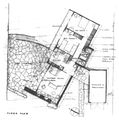
Harry Seidler was an Austrian-born Australian architect who is considered to be one of the leading exponents of Modernism's methodology in Australia and the first architect to fully express the principles of the Bauhaus in Australia.

Robin Gerard Penleigh Boyd was an Australian architect, writer, teacher and social commentator. He, along with Harry Seidler, stands as one of the foremost proponents for the International Modern Movement in Australian architecture. Boyd is the author of the influential book The Australian Ugliness (1960), a critique on Australian architecture, particularly the state of Australian suburbia and its lack of a uniform architectural goal.
Sir Roy Burman Grounds was an Australian architect. His early work included buildings influenced by the Moderne movement of the 1930s, and his later buildings of the 1950s and 1960s, such as the National Gallery of Victoria and the adjacent Victorian Arts Centre, cemented his legacy as a leader in Australian architecture.
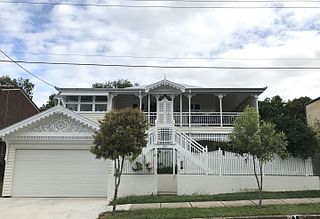
Australian residential architectural styles have evolved significantly over time, from the early days of structures made from relatively cheap and imported corrugated iron to more sophisticated styles borrowed from other countries, such as the California bungalow from the United States, the Georgian style from Europe and Northern America, and the Victorian style from the United Kingdom. A common feature of the Australian home is the use of fencing in front gardens, also common in both the United Kingdom and the United States.
Australian non-residential architectural styles are a set of Australian architectural styles that apply to buildings used for purposes other than residence and have been around only since the first colonial government buildings of early European settlement of Australia in 1788.
Neil Clerehan was an Australian architect and architectural writer.
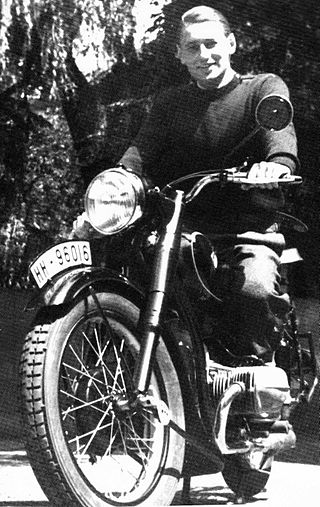
Frederick Romberg,, , was a Swiss-trained architect who migrated to Australia in 1938, and became a leading figure in the development of Modernism in his adopted city.

Seabrook and Fildes was an Australian architecture practice in Melbourne, Victoria that played a significant role in the introduction of modernist architecture that first occurred in the 1930s. They are most well known for the Dutch modernist inspired Mac.Robertson Girls High School, designed by Norman Seabrook in 1933.
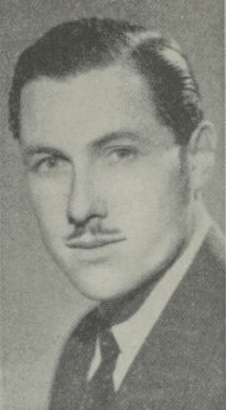
Douglas Burrage Snelling (1916–1985) was an Australian architect and designer.

House at Caulfield, is a family home situated at 450 Dandenong Road in Caulfield North, Melbourne, Victoria, Australia, designed by Anatol Kagan in 1956 for Polish-Jewish emigre Leo Lind and his wife Dorothy. Born in Russian on October 4, 1913 Anatol Kagan's career as an architect spanned over seven decades until his death on July 2, 2009. He was actively involved in the field of design, as well as a writer, translator, lecturer and political activist. The house is an important work of its period demonstrating the Modernist architectural movement of Melbourne during the mid 20th Century, and in 2018 was added to the Victorian Heritage Register. Kagan was also influenced by the works of his local contemporaries, Roy Grounds, Frederick Romberg and Robin Boyd.

Newburn Flats is an apartment building located at 30 Queens Road, Melbourne. It is considered one of the first examples of European Modernist ideals applied to multi-unit residences in Australia. It was designed by the firm Romberg & Shaw in 1939 and completed in 1941.
Geoffrey Harley Mewton (1905–1998) was an Australian architect and leading proponent of modern architecture in Melbourne during the 1930s. He is best known for the Woy Woy flats at Elwood, Victoria, amongst the first flat blocks in Melbourne to show the influence of the European Modern movement.
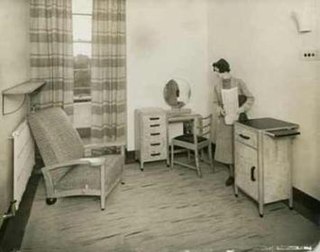
Mary Turner Shaw (1906–1990) was an Australian architect. She was born in Caulfield, Melbourne, Australia and is one of the first women to be employed as an architect in the early 1930s in Australia and thus pioneered new pathways for female architects. Her career is widely known for her working qualities that made her oversee many projects across Australia. She also became a distinct figure as an architectural historian, when she started publishing books and written articles. Her skills were diverse as she worked as a fashion designer, interior designer, project manager, public works architect and pioneer architectural librarian. As historian Geoffrey Serle described her, she was "a born writer and research historian with imagination, the ability to tell a story and define and ask fundamental questions".
Originally known as Stephenson and Meldrum (1921–1937), Stephenson and Turner (1938–1995) was a prominent Australian architectural firm, best known for the pioneering modernism of their numerous hospital designs of the 1930s and 1940s.
Christine Phillips is an Australian architect, academic, writer and broadcaster based in Melbourne, Australia.
Harriet Edquist is an Australian historian and curator, and Professor Emerita in the School of Architecture and Urban Design at RMIT University in Melbourne. Born and educated in Melbourne, she has published widely on and created numerous exhibitions in the field of Australian architecture, art and design history. She has also contributed to the production of Australian design knowledge as the founding editor of the RMIT Design Archives Journal and is a member of the Design Research Institute at RMIT University.

Harry Stephen Winbush was an architect and educator who practised in Melbourne, Australia. He is best known as the head of the architecture course at what is now RMIT University from 1943 to 1968.

Simpson-Lee House I is a heritage-listed residence located at 23 Roland Avenue, in the Sydney suburb of Wahroonga in the Ku-ring-gai Council local government area of New South Wales, Australia. It was designed by Arthur Baldwinson and built from 1958 to 1962 by George M. Koch. It is also known as Simpson Lee House. It was added to the New South Wales State Heritage Register on 27 November 2009.
Marcus Martin (1893–1981) was an Australian architect. He was an associate of the Royal Institute of British Architects, fellow of Royal Institute of Architects, and honorary secretary to the Royal Victorian Institute of Architects.

The Victorian Architecture Medal is the highest honour awarded annually by the Victorian Chapter of the Australian Institute of Architects and has been awarded 38 consecutive times since 1987. The Medal was originally known as the ‘Street Architecture Medal’ introduced by the Royal Victorian Institute of Architects (RVIA) in 1929 as an award for the design of a building of exceptional merit. Buildings were judged on their "urban propriety and architectural etiquette; the building had to front a street, road, square or court" and with a requirement of being publicly accessible, thereby excluding residential and private commissions.

